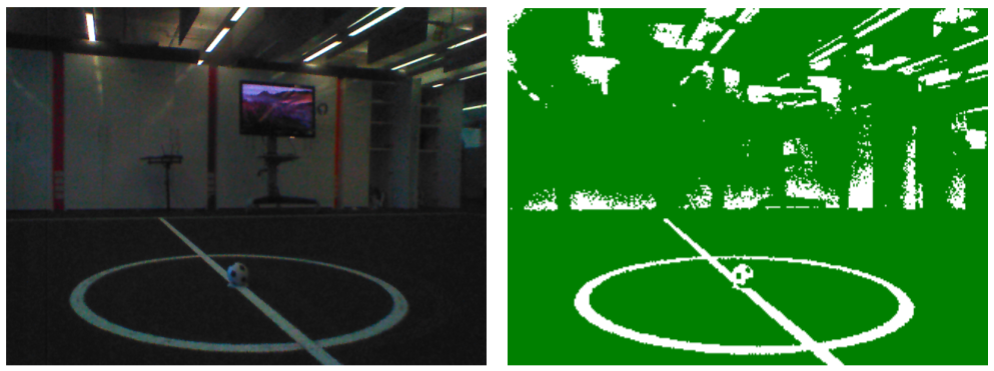Adaptive Thresholding
In 2018 we converted the vision system to work with binary images to be more robust to varied lighting. This is done with adaptive thresholding, which is an effective method for calculating the threshold dynamically in scenes with uneven levels of brightness. This is a significant improvement on the static colour calibrated tables used by the team in previous years.
We utilise an efficient implementation (Adaptive Thresholding Using the Integral Image) to achieve real-time thresholding on the Nao. The algorithm determines the average y value (in the YUV422 image) of the pixels within a square window surrounding each pixel. If the value of the centre pixel is sufficiently lower than the average within the window it is set to black, otherwise it is set to white. This process can be performed efficiently, regardless of window size, with the integral image.
An example of the adaptive thresholding process below. White pixels are considered light whilst green pixels are dark.

As this method does not rely on specialised colour tables the exposure of the image may be allowed to vary. This has allowed us to enable auto exposure on the camera, further improving our system’s robustness to changes in lighting. Target exposure was brought down to minimise motion blur. Furthermore, manual colour classification of the environment before each game is no longer necessary, reducing the setup time. The main downside is the loss of colour information, previously used to determine the field boundary.